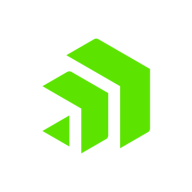

LogicMonitor and Flowmon are competing products in the network monitoring space. LogicMonitor appears to have an advantage due to its superior support and pricing, whereas Flowmon offers powerful features that attract those seeking advanced capabilities.
Features: LogicMonitor impresses with robust monitoring features, extensive integrations, and provides comprehensive network visibility. Flowmon is recognized for advanced network performance monitoring, in-depth traffic analysis, and solid network diagnostics.
Room for Improvement: LogicMonitor could enhance its user interface, expand reporting features, and refine scalability options. Flowmon could benefit from improved user support, streamlined setup processes, and better integration capabilities.
Ease of Deployment and Customer Service: LogicMonitor offers an easier deployment process and strong customer support which aids in problem resolution. Flowmon, though effective, might have a steeper learning curve affecting deployment speed and increasing dependence on support.
Pricing and ROI: LogicMonitor provides competitive pricing with significant ROI and flexible options, appealing to cost-sensitive customers. Flowmon might have higher initial costs but these are justified by its extensive capabilities and detailed insights, offering strong ROI in complex network environments.
| Product | Market Share (%) |
|---|---|
| Flowmon | 1.9% |
| Darktrace | 22.3% |
| Vectra AI | 15.6% |
| Other | 60.2% |
| Product | Market Share (%) |
|---|---|
| LogicMonitor | 2.1% |
| Zabbix | 12.0% |
| Datadog | 5.0% |
| Other | 80.9% |


| Company Size | Count |
|---|---|
| Small Business | 11 |
| Midsize Enterprise | 10 |
| Large Enterprise | 9 |
Flowmon is a professional tool for effective network troubleshooting, performance monitoring, capacity planning, encrypted traffic analysis and cloud monitoring. Instead of just the red/green infrastructure status, it helps NetOps teams to understand user experience while keeping the amount of data noise and analytical work to a minimum. Flowmon is a part of the Kemp product portfolio.
LogicMonitor offers flexible IT monitoring with customizable dashboards and robust alerting capabilities. It integrates seamlessly with third-party apps like ServiceNow and provides a single-pane view for diverse IT environments, aiding in proactive issue resolution and enhancing operational efficiency.
LogicMonitor stands out with its capability to monitor diverse infrastructures including Cisco Voice systems, data centers, and virtual environments. Supporting servers, storage, networking devices, and applications, it provides seamless integration with cloud services like AWS and Azure. Users leverage its scalability and flexibility, benefiting from dynamic thresholds, anomaly detection, and detailed visualization. All these features contribute to improved management of IT assets and streamlined operations. Users suggest improvements in mapping, reporting, and automation for remediation, desiring more customizations and an expansive application performance monitoring toolset.
What are LogicMonitor's key features?LogicMonitor is widely implemented across industries, providing monitoring for infrastructure in sectors like telecommunications, cloud computing, and managed services. Managed service providers particularly value its ability to track client environments, deliver proactive alerts, and generate comprehensive reports, while its integration with cloud platforms like AWS and Azure offers users centralized management and visibility into IT assets worldwide.
We monitor all Network Detection and Response (NDR) reviews to prevent fraudulent reviews and keep review quality high. We do not post reviews by company employees or direct competitors. We validate each review for authenticity via cross-reference with LinkedIn, and personal follow-up with the reviewer when necessary.